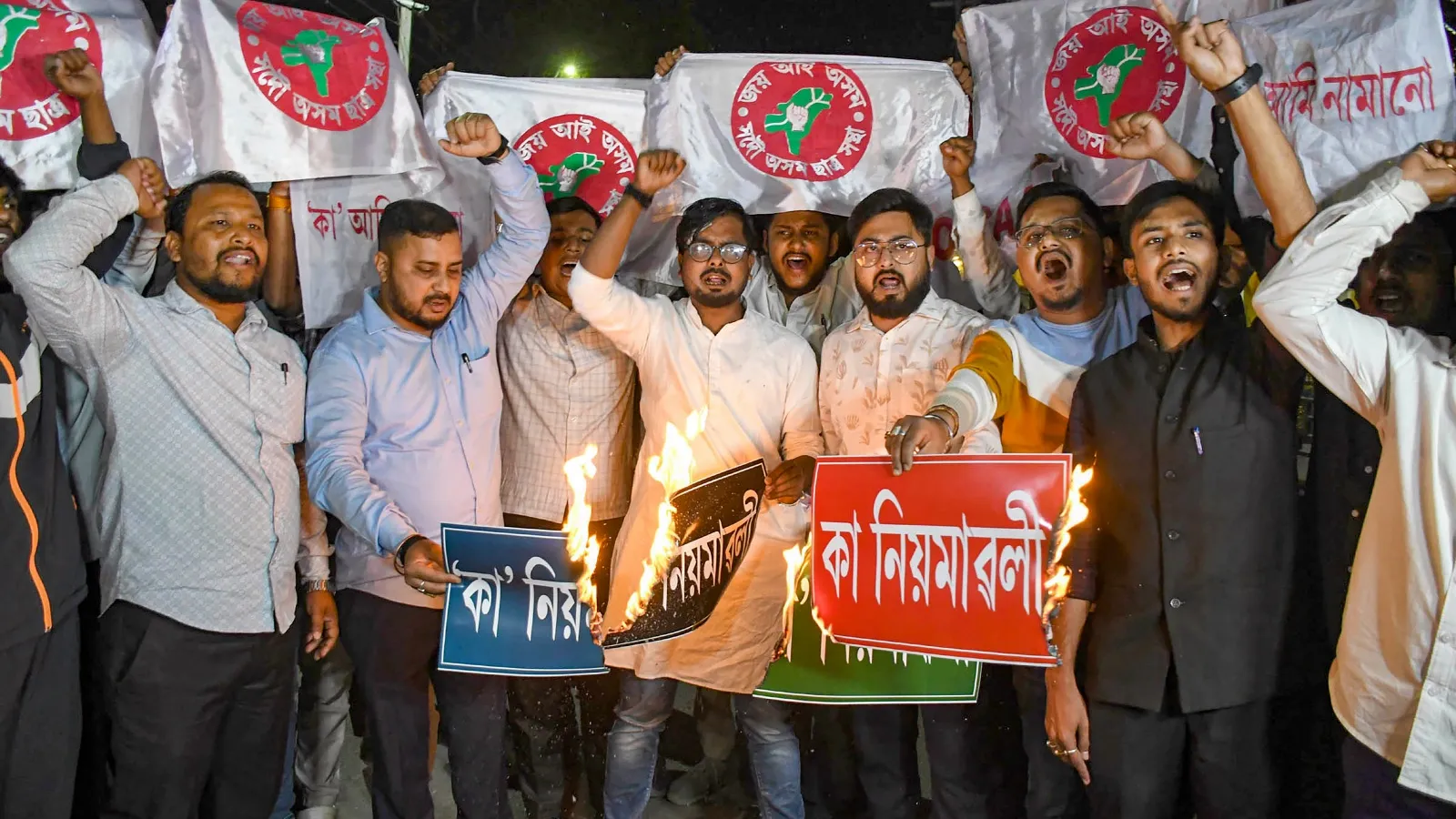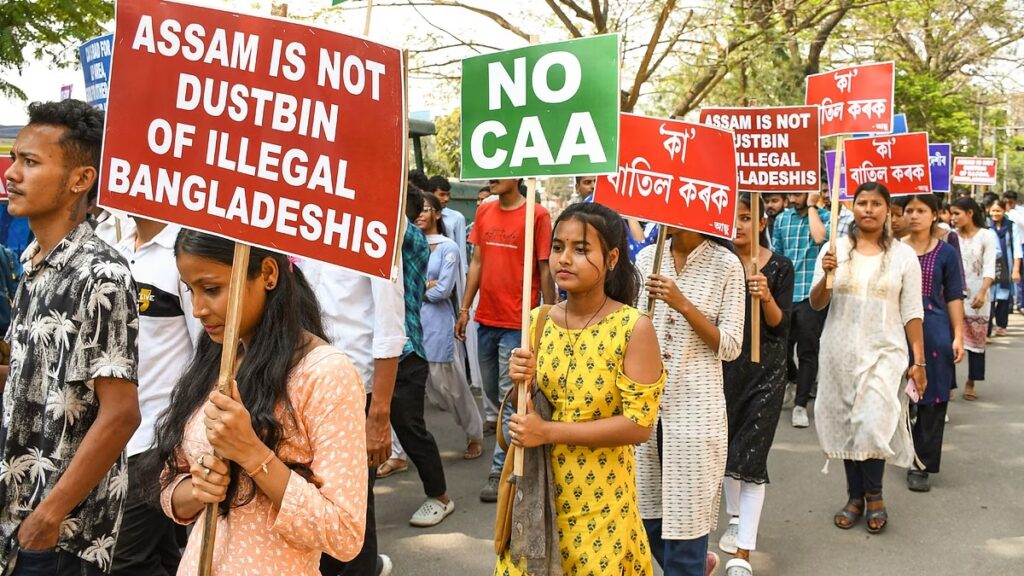India witnessed widespread protests against the Citizenship Amendment Act (CAA), including in the northeastern state of Assam. The CAA, passed by the Indian Parliament, provides a path to citizenship for religious minorities from neighboring countries but excludes Muslims. This sparked concerns in Assam, where there’s a long-standing fear of demographic change due to migration from Bangladesh.
The anti-CAA protests in Assam were fueled by concerns over the potential impact of the law on the state’s indigenous communities and identity. Protesters argued that it could lead to an influx of migrants, altering the socio-political landscape and threatening the cultural heritage of the region. The protests were marked by demonstrations, marches, and strikes, with people from various walks of life participating.

Source: The Indian Express
One of the consequences of the protests was a series of hartals (strikes) across Assam. Hartals are a form of civil disobedience where businesses, transportation, and other services are shut down as a sign of protest. These hartals aimed to draw attention to the grievances of the people and put pressure on the government to reconsider the CAA.
SOURCE:- NEWS 18
The political landscape in Assam also witnessed significant activity amidst these protests. Both the Bharatiya Janata Party (BJP) and the Indian National Congress, two major political parties in the state, were gearing up for the upcoming Lok Sabha (LS) elections. As protests raged on, political parties were strategizing their next moves.
In such a charged environment, the release of the second list of Lok Sabha candidates by the BJP and Congress became highly anticipated. These lists would reveal the parties’ choices for candidates in various constituencies, reflecting their political calculations and strategies. The candidates chosen would play a crucial role in shaping the electoral dynamics and influencing the outcome of the elections.
For the BJP, the challenge was to navigate the anti-CAA sentiment in Assam while maintaining its electoral base and addressing the concerns of its supporters. The party had to strike a balance between its national agenda, including the implementation of the CAA, and the local sentiments in Assam.
Similarly, the Congress party aimed to capitalize on the discontent surrounding the CAA and present itself as the voice of the people’s concerns. Its candidate selection would reflect its efforts to appeal to diverse sections of society and consolidate anti-BJP votes.
Overall, the anti-CAA protests and hartals in Assam had significant ramifications for both the political landscape and the upcoming Lok Sabha elections. The release of the second list of candidates by the BJP and Congress would be closely watched as a reflection of the evolving political dynamics in the state.
Share your views in the comments

